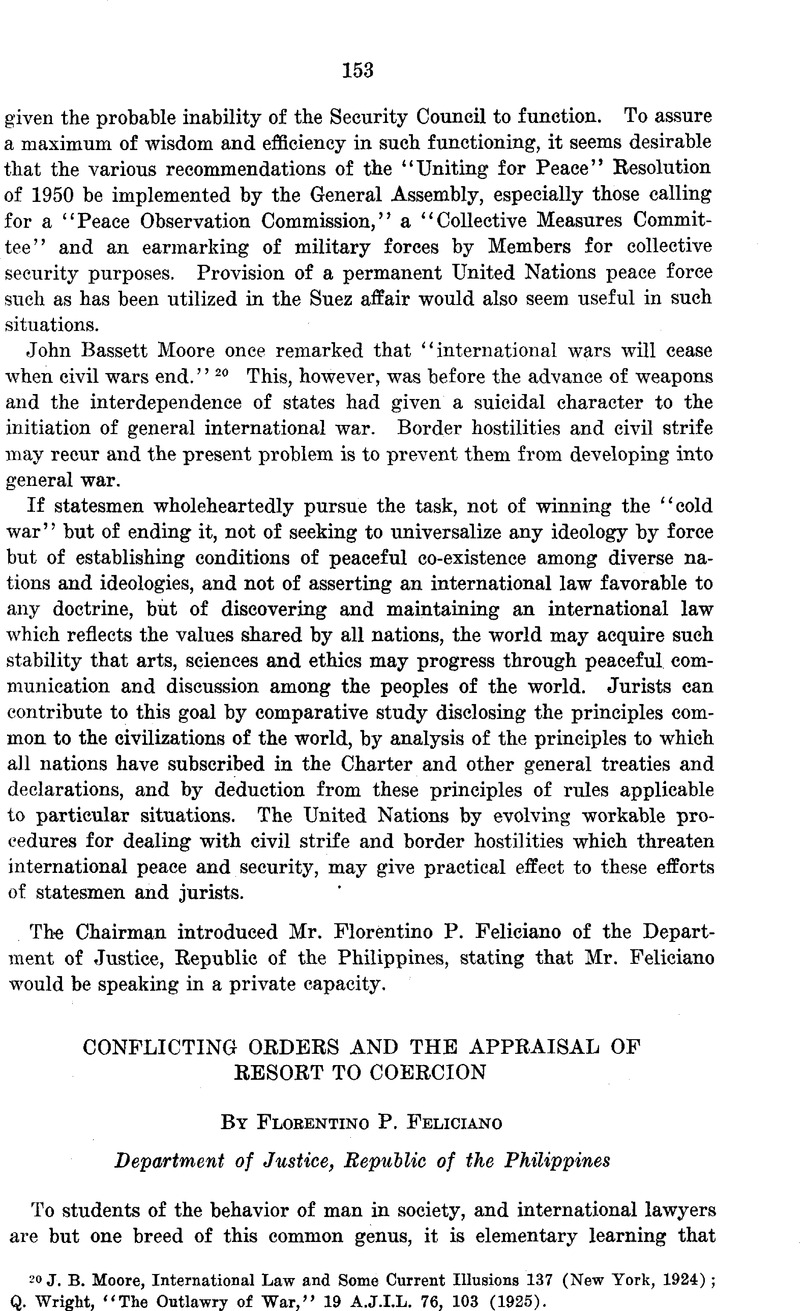No CrossRef data available.
Published online by Cambridge University Press: 27 February 2017

1 Extended development, and documentation, of the principal points somewhat cryptically outlined in this brief paper may be found in KcDougal and Feliciano, “Legal Regulation of Eesort to International Coercion: Aggression and Self-Defense in Policy Perspective,” 68 Yale Law Journal 1057 (1959).
2 Jenks, The Common Law of Mankind 139–143 (1958).
3 Art. 2(4).
4 Art. 1(1) and Art. 39.
5 Quoted in Soloveitchik, “International Law as ‘Instrument of Politics,’” 21 U. of Kansas City Law Eev. 169, 177 (1958).
6 Goodrich, The United Nations 327 (1959).
7 Hitler, Mein Kampf 949 (Annotated English ed., Eeynal and Hitchcock Co., 1939).
8 See, e.g., Strausz-Hupé and others, Protracted Conflict (1959), and Leites, A Study of Bolshevism (1953).
9 2 Wright, A Study of War 833–848 (1942).
10 An excellent recent study is George, Propaganda Analysis (1959). See also Berelson, Content Analysis in Communications Research (1952).